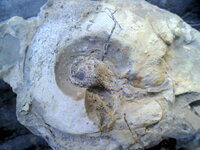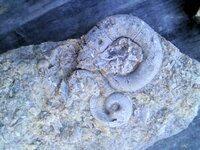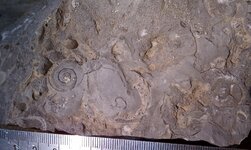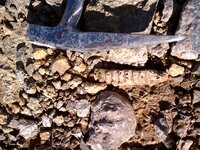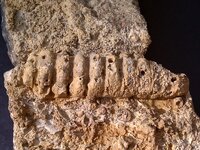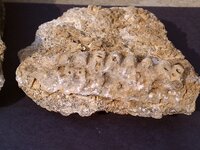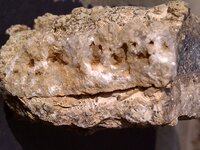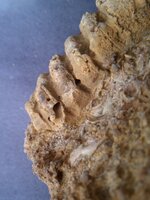I know several people with Kindles that love them but before you order an e-book to read on the computer, download the software and try reading some of the freebies to be sure you like this medium. I was very disappointed in the few things I tried and feel that reference books might still be better in book form. It may be that a "pay-for" book can be referenced easily and would be great in ebook format but the couple of free things I played with I did not like at all.
You are using an out of date browser. It may not display this or other websites correctly.
You should upgrade or use an alternative browser.
You should upgrade or use an alternative browser.
Ordovician in Tennessee (Help!)
- Thread starter Terri
- Start date
- Joined
- Dec 20, 2009
- Messages
- 961
Thanks D, if you were dissapointed I'm not going to even bother with it. Too many dollars to waste to be even remotely dissapointed!
I just heard it was snowing heavily in Atlanta, hope you get to stay home tommorrow.
I just heard it was snowing heavily in Atlanta, hope you get to stay home tommorrow.
- Joined
- Dec 20, 2009
- Messages
- 961
I'm reading like crazy on trace fossils, and this location seems to have a lot of different types that I will post as soon as I have a better understanding of what I'm posting.
Here are two fossils I think are gastropods, just different views than I'm used to seeing? The first one is about 1.5 cm. across and the second about 1cm.
Here are two fossils I think are gastropods, just different views than I'm used to seeing? The first one is about 1.5 cm. across and the second about 1cm.
Attachments
How do you determine a snail from a ceph fossil?
This article from the cephalopod page helps a little if I am right in understanding that each new chamber produces a visible outside marking. I can imagine it with the rings I see in a lot of the photos but can't visualize how the more ornate looking marks are a feature of an internal chamber.
This article from the cephalopod page helps a little if I am right in understanding that each new chamber produces a visible outside marking. I can imagine it with the rings I see in a lot of the photos but can't visualize how the more ornate looking marks are a feature of an internal chamber.
I don't see any sign of sutures, so I think you're right on the gastropods. 
- Joined
- Dec 20, 2009
- Messages
- 961
Just a guess at a generic assignment, Raphistomina.
- Joined
- Dec 20, 2009
- Messages
- 961
Thanks Kevin, that was another of the different views, I'm not used to seeing.
- Joined
- Dec 20, 2009
- Messages
- 961
Well, the pics. came out in the wrong order and the text should have come first but you'll get the idea!
Attachments
70? Ain't seen that for months.
Some of the holes look like they are on a freshly broken surface, can you tell if the siphuncle was broken before it got fossilized? All the septa and outer shell are missing so it was well abraded while sitting on the sea floor. Do gastropods eat calcium deposits just for the calcium? Nice fossil Terri! And as always, more questions than answers.
Some of the holes look like they are on a freshly broken surface, can you tell if the siphuncle was broken before it got fossilized? All the septa and outer shell are missing so it was well abraded while sitting on the sea floor. Do gastropods eat calcium deposits just for the calcium? Nice fossil Terri! And as always, more questions than answers.
- Joined
- Dec 20, 2009
- Messages
- 961
To my untrained eye Kevin, it looks as if it was fossilized after it was broken, maybe still attached in a few small places where some of the crystals look freshly broken. Some of the other edges on that rock do look fresh and it was probably broken up when they were hauling rock out. But then I really don't know what I'm talking about, hence all the questions... I'm going to try to post another pic. of rest of the fossil on the other rock, had difficulties posting this morning so if doesn't show up, I'll have to see what's up with my computer.
I'm going to try to post another pic. of rest of the fossil on the other rock, had difficulties posting this morning so if doesn't show up, I'll have to see what's up with my computer.
 I'm going to try to post another pic. of rest of the fossil on the other rock, had difficulties posting this morning so if doesn't show up, I'll have to see what's up with my computer.
I'm going to try to post another pic. of rest of the fossil on the other rock, had difficulties posting this morning so if doesn't show up, I'll have to see what's up with my computer.
- Joined
- Dec 20, 2009
- Messages
- 961
With that new pic I can see that the holes on the broken surface aren't as round as those on the original surface, and also that the inside has had a lot of recrystallization taking place, so it was probably broken while they were quarrying.
Some of the holes on the outer surface look like they have lips around the edge, perhaps something was living in the holes rather than just drilling them to get inside.
Some of the holes on the outer surface look like they have lips around the edge, perhaps something was living in the holes rather than just drilling them to get inside.
- Joined
- Dec 20, 2009
- Messages
- 961
- Joined
- Dec 20, 2009
- Messages
- 961
So probably worm burrows?
Similar threads
[Fossils & History]
Jurassic Vampire Squid Had Ink Sac and Luminous Organs | Sci.News
- Replies
- 0
- Views
- 203
- Replies
- 2
- Views
- 855

